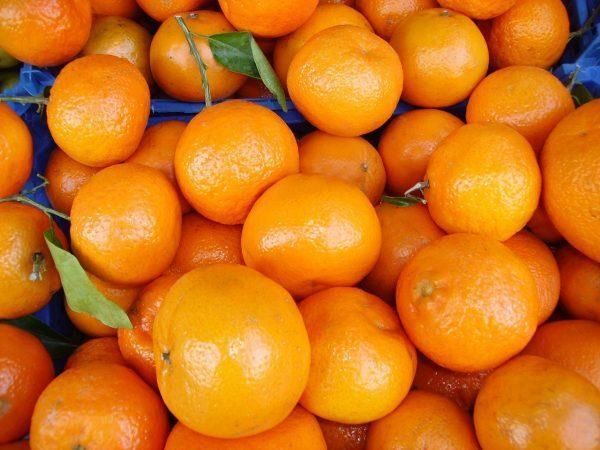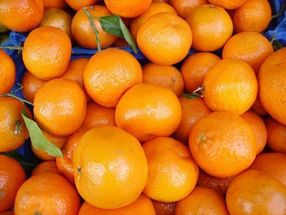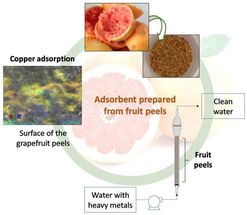Fruit peels for cleaning wastewater
Wastewater cleaned thanks to a new adsorbent material made from fruit peels
Researchers from the University of Granada (UGR), and from the Center for Electrochemical Research and Technological Development (Centro de Investigación y Desarrollo Tecnológico en Electroquímica, CIDETEQ) and the Center of Engineering and Industrial Development (Centro de Ingeniería y Desarrollo Industrial, CIDESI), both in Mexico, have developed a process that allows to clean waters containing heavy metals and organic compounds considered pollutants, using a new adsorbent material made from the peels of fruits such as oranges and grapefruits.

Orange peels pose a problem for the food industry, given that they are residues that take up a great volume and which aren't very useful nowadays.
UGRdivulga

Diagram of the process designed by the UGR researchers.
UGRdivulga


Said peels are residues which pose a problem for the food industry, given that they take up a great volume and aren't very useful nowadays. 38.2 million tons of said fruit peels are estimated to be produced worldwide each year in the food industry.
The research, in which the UGR participates, has served for designing a new process by which, thanks to an Instant Controlled Pressure Drop treatment, it is possible to modify the structure of said residues, giving them adsorbent properties such as a greater porosity and surface area.
Researcher Luis Alberto Romero Cano, from the Carbon Materials Research Team (Grupo de Investigación en Materiales de Carbón) at the Faculty of Science, UGR, explains that, by a subsequent chemical treatment, they "have managed to add functional groups to the material, thus making it selective in order to remove metals and organic pollutants present in water".
A subsequent research carried out by the authors of this paper has showed that it is possible to pack those new materials in fixed bed columns, in a way similar to a filter by which wastewater runs on a constant flux process, like the usual wastewater treatments. This laboratory-scale study has allowed to obtain parameters to design a large-scale use of said materials.
"The results show a great potential for the use of said materials as adsorbents capable of competing with commercial activated carbon for the adsorption and recovery of metals present in wastewater, in a way that it could be possible to carry out sustainable processes in which products with a great commercial value could be obtained from food industry residues", Romero Cano says.
Original publication
Most read news
Original publication
Luis A Romero‐Cano , Linda V González‐Gutiérrez , Leonardo A Baldenegro‐Pérez , Francisco Carrasco‐Marín; "Grapefruit peels as biosorbent: characterization and use in batch and fixed bed column for Cu(II) uptake from wastewater"; J. Chem. Technol. Biotechnol.; 2017
Topics
Organizations
Other news from the department science

Get the life science industry in your inbox
By submitting this form you agree that LUMITOS AG will send you the newsletter(s) selected above by email. Your data will not be passed on to third parties. Your data will be stored and processed in accordance with our data protection regulations. LUMITOS may contact you by email for the purpose of advertising or market and opinion surveys. You can revoke your consent at any time without giving reasons to LUMITOS AG, Ernst-Augustin-Str. 2, 12489 Berlin, Germany or by e-mail at revoke@lumitos.com with effect for the future. In addition, each email contains a link to unsubscribe from the corresponding newsletter.




















































